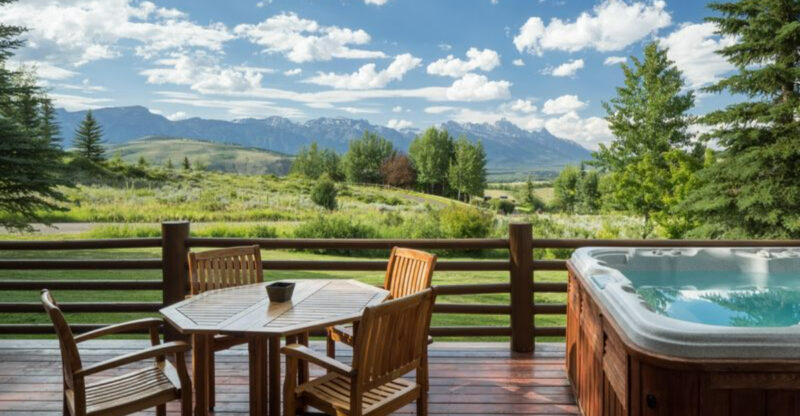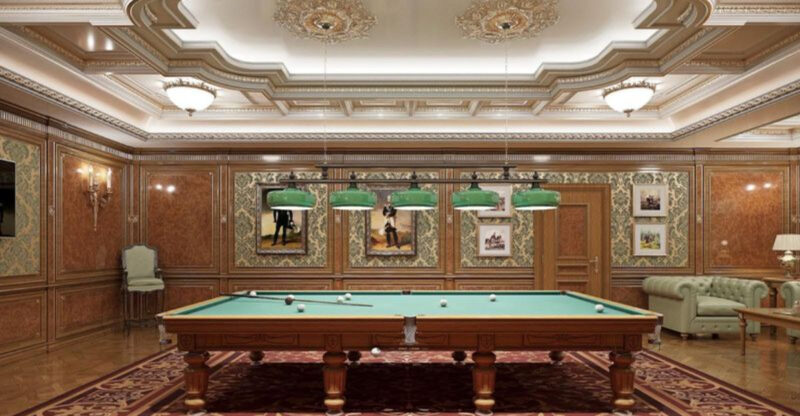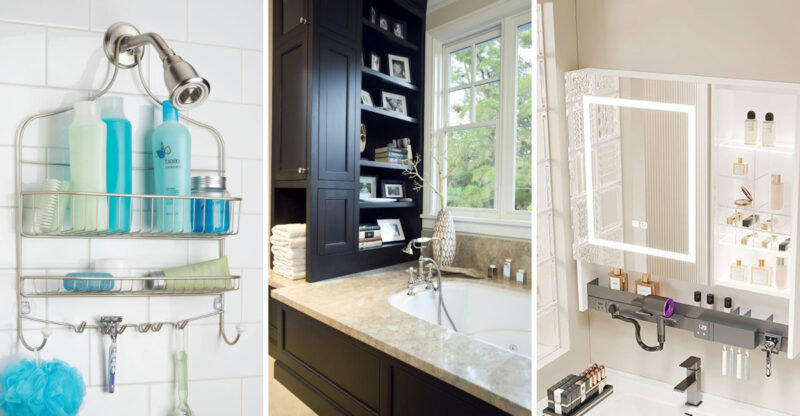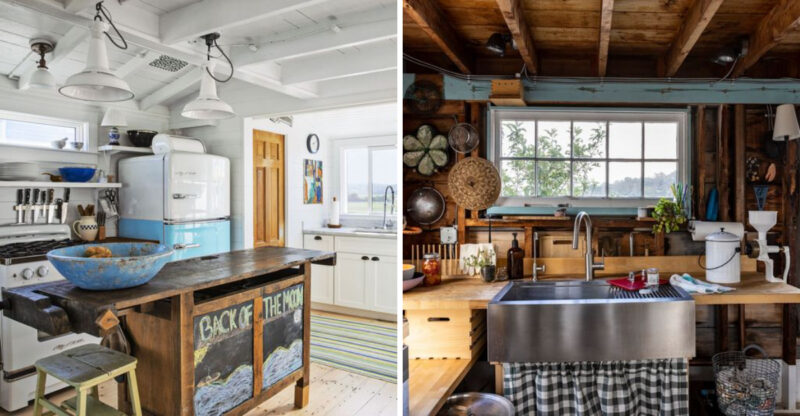33 Once-Trendy Kitchen Designs That Are Slowly Coming Back

Remember those kitchen styles your parents – or even your grandparents – had? The bold wood cabinets, checkered floors, or avocado-green appliances you once rolled your eyes at?
Surprise: they’re making a comeback. But this time, they’re sleeker, smarter, and reimagined for modern living. Designers and homeowners alike are blending nostalgia with innovation, turning retro touches into bold statements in today’s kitchens.
1. Butcher Block Countertops
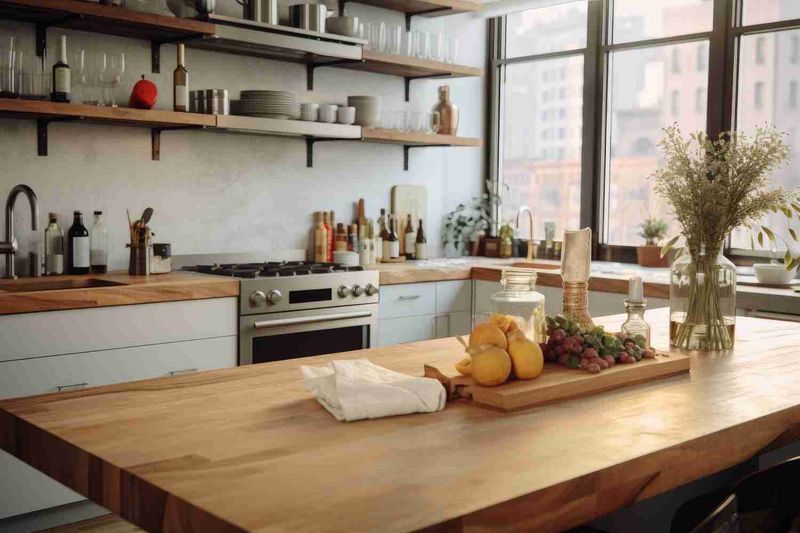
The warm, natural appeal is impossible to resist in today’s homes. Butcher block countertops bring character and functionality that cold stone sometimes lacks.
These wooden surfaces were wildly popular in the 70s but fell out of favor when granite took over. Now homeowners appreciate their softer feel, eco-friendly nature, and the way they develop a beautiful patina with age.
2. Colorful Appliances
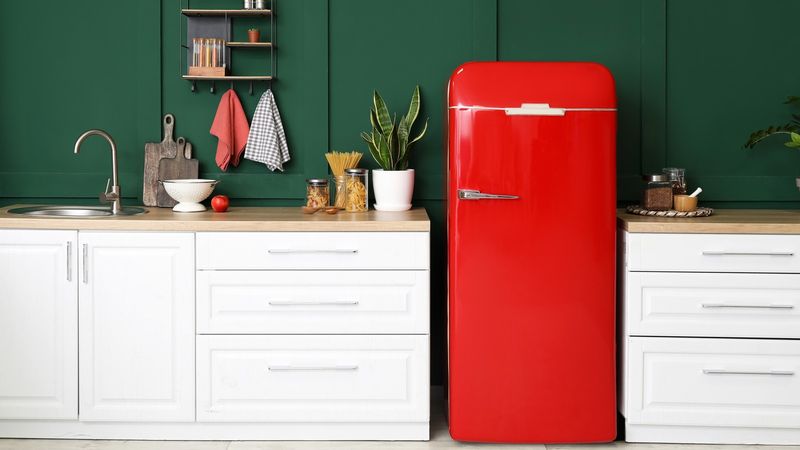
Gone are the days when stainless steel was the only acceptable finish. Vibrant refrigerators, stoves, and dishwashers in blues, greens, and reds add personality to cooking spaces.
Colorful appliances were huge in the 1950s before neutral tones dominated. The resurgence celebrates individuality and allows homeowners to express themselves through these functional statement pieces rather than hiding them away.
3. Wood Paneling
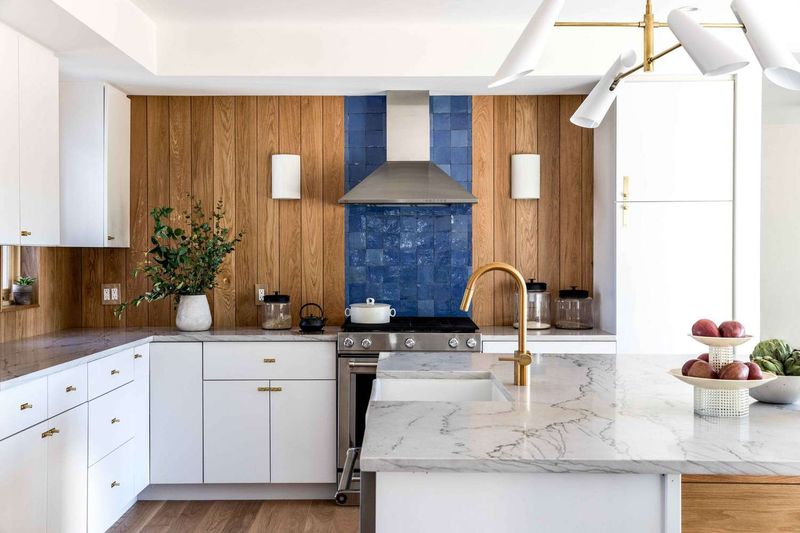
What once screamed 1970s basement is now the height of sophisticated warmth. Wooden accent walls and cabinet details add texture and natural elements to kitchens that might otherwise feel cold.
Modern interpretations use lighter finishes and more subtle applications than their predecessors. Designers are incorporating wood paneling strategically rather than covering every surface, creating focal points that ground the space with organic charm.
4. Vintage-Inspired Lighting

Pendant fixtures with schoolhouse designs or industrial vibes have replaced bland recessed lighting. These statement pieces draw the eye upward and create ambiance beyond mere functionality.
Vintage-inspired lighting adds character that cookie-cutter fixtures lack. Whether it’s reproduction farmhouse pendants or actual antique finds, these lights connect to design history while still feeling fresh when paired with contemporary elements.
5. Breakfast Nooks
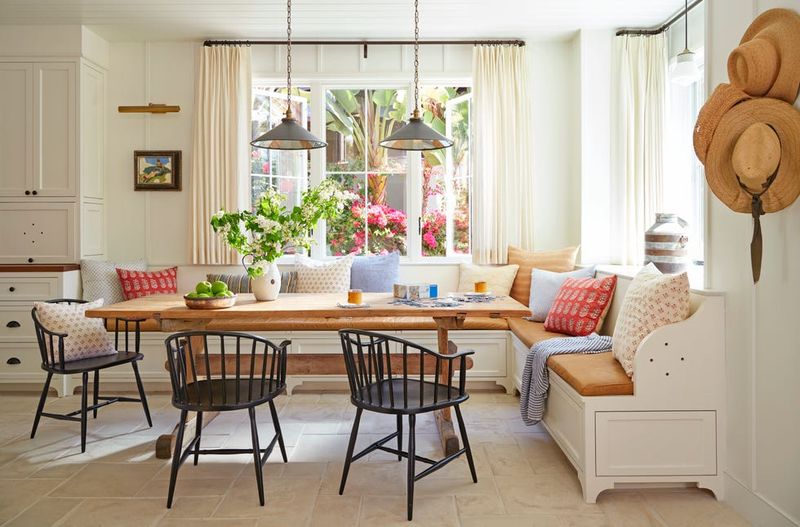
Cozy built-in seating creates an inviting spot for morning coffee or casual meals. The charm comes from combining comfort with space efficiency in a way open floor plans often miss.
Breakfast nooks fell out of fashion when formal dining rooms and kitchen islands took precedence. Their return reflects our desire for dedicated gathering spaces that feel intimate and purposeful rather than merely transitional.
6. Terrazzo Flooring
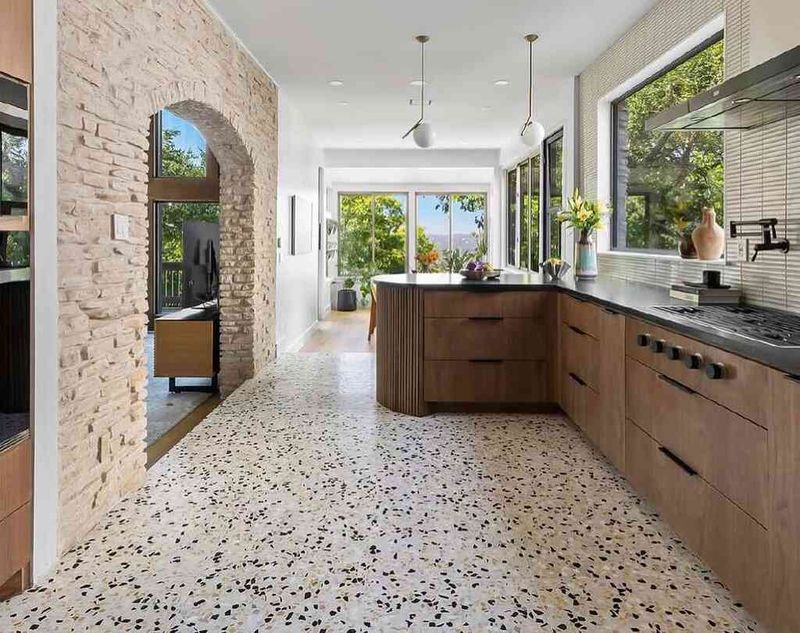
Flecked with colorful chips of marble, quartz, and glass, these surfaces create visual interest underfoot. The playful pattern adds personality without overwhelming the space.
Terrazzo reached peak popularity in mid-century buildings before being covered up by carpet and wood. Today’s versions come in more refined color palettes and can be found in tiles for easier installation, making this durable material accessible for modern renovations.
7. Farmhouse Sinks
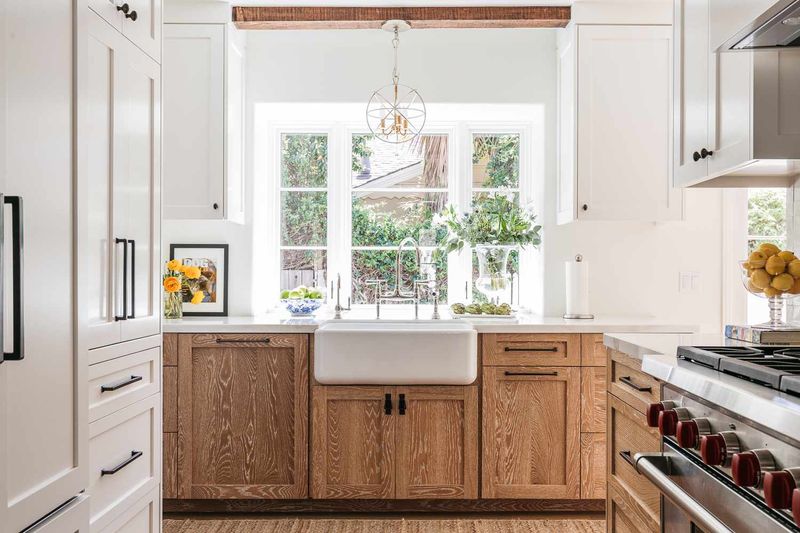
Deep and wide with an exposed front, these practical basins make a statement while handling big pots with ease. Their generous size accommodates everything from dinner party cleanup to flower arranging.
Farmhouse sinks originated in eras before modern plumbing when water was carried in. The current revival appreciates both their functionality and the way they anchor the kitchen with a focal point that’s both beautiful and hardworking.
8. Linoleum Flooring
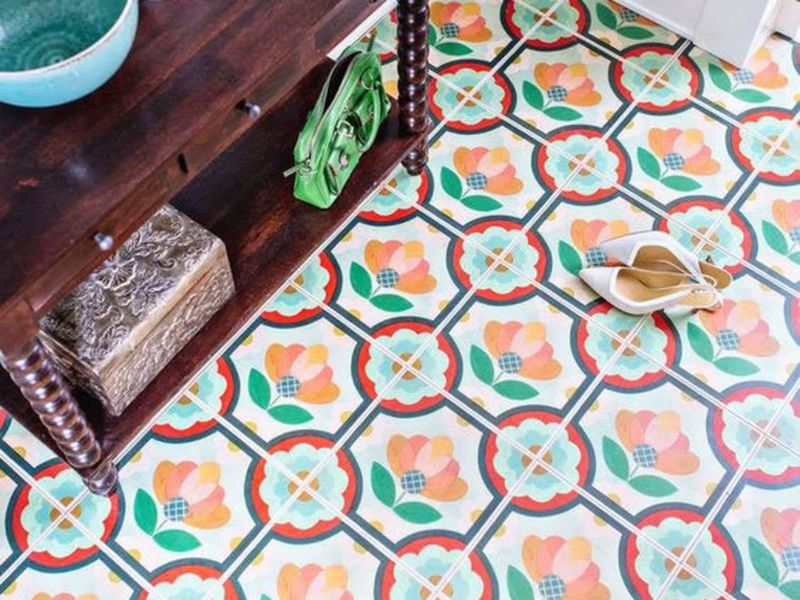
Eco-friendly and resilient, today’s versions come in stunning patterns unrecognizable from their predecessors. Standing on linoleum provides comfort during long cooking sessions that harder surfaces can’t match.
This sustainable material made from linseed oil was ubiquitous before vinyl took over. Modern manufacturing techniques have elevated its appearance while maintaining the natural antibacterial properties and soft feel that made it popular in the first place.
9. Wallpaper
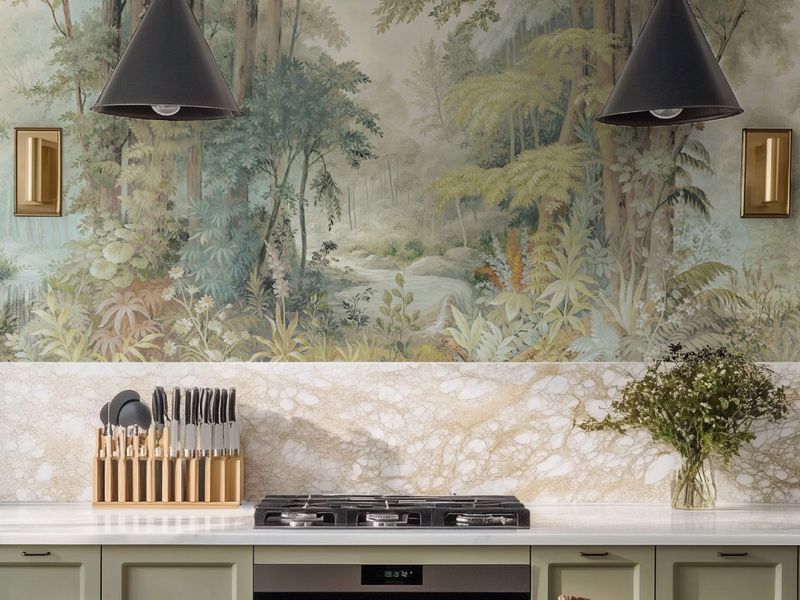
Bold patterns create personality in spaces that might otherwise feel sterile. Modern kitchens are embracing statement walls that add character without permanent commitment.
Wallpaper dominated kitchens before painted walls became the norm. Today’s versions feature water-resistant finishes suitable for splash zones, and removable options make it less intimidating for homeowners wanting to experiment with pattern without long-term consequences.
10. Pastel Appliances
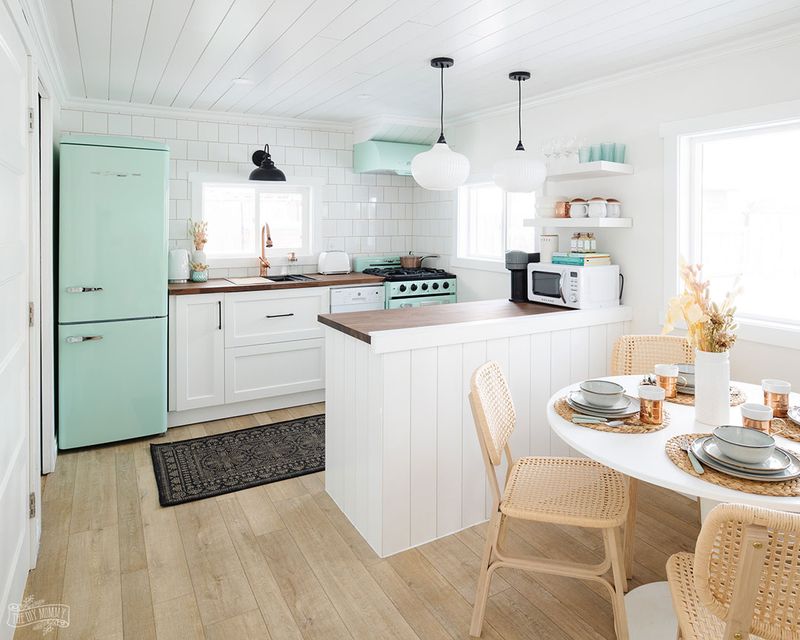
Soft mint, baby blue, and blush pink add whimsy to cooking spaces. These gentle hues create a cheerful atmosphere that makes daily tasks more enjoyable.
Pastel appliances were everywhere in the 1950s before disappearing for decades. Their return offers a playful alternative to stainless steel and black, with manufacturers now offering modern functionality behind these nostalgic colors for the best of both worlds.
11. Glass-Front Cabinets
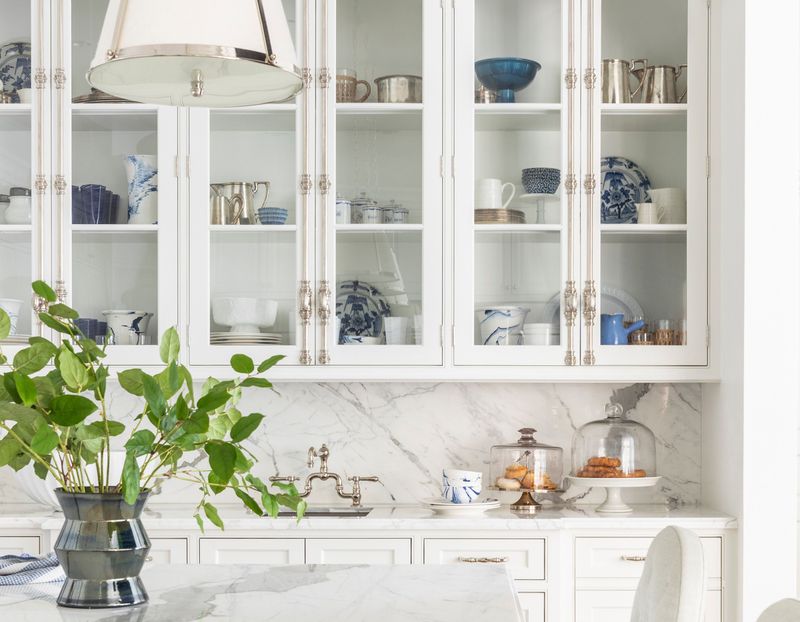
Offering a glimpse of what’s inside without the maintenance of open shelving, these cabinets create depth and interest. They break up solid walls of cabinetry while still protecting contents from dust.
Glass-front cabinets were standard in early 20th-century kitchens before solid doors took over. Today they’re being incorporated strategically to display beautiful dishware while maintaining the clean lines and storage capacity modern homeowners demand.
12. Laminate Countertops
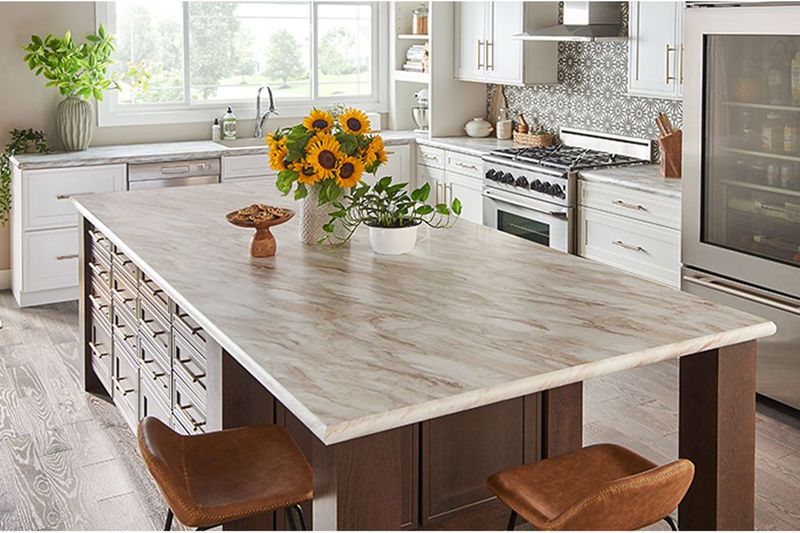
Affordable and available in countless patterns, modern versions look surprisingly luxurious. Technological advances have created laminate that mimics stone with remarkable accuracy at a fraction of the cost.
Laminate countertops were ubiquitous before being dismissed as cheap. The new generation features improved durability, realistic textures, and designer-approved patterns that make them a practical choice for style-conscious homeowners working within realistic budgets.
13. Statement Range Hoods
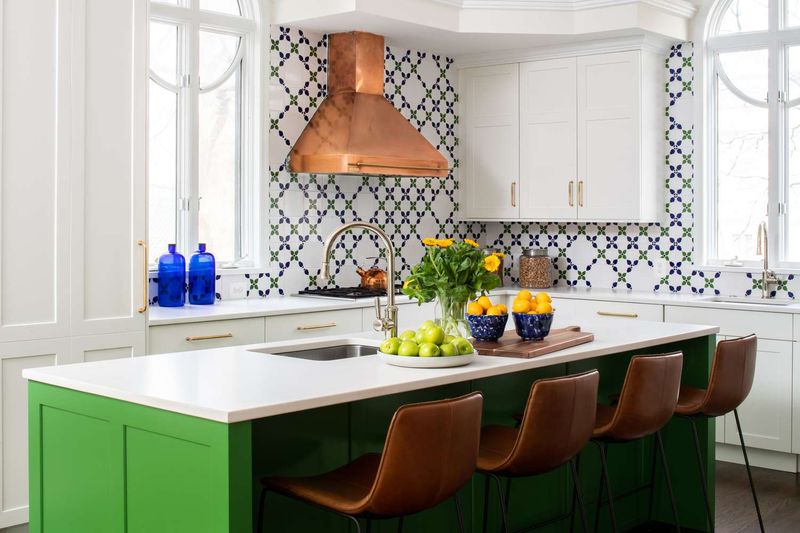
Moving beyond utilitarian function, these focal points now incorporate artistic elements and unexpected materials. Copper, brass, and even custom woodwork transform necessary ventilation into architectural features.
Statement range hoods were common in old European kitchens before disappearing behind cabinetry. Their resurgence celebrates the cooking area as the heart of the kitchen, worthy of special attention and design consideration rather than something to be hidden away.
14. Tile Countertops
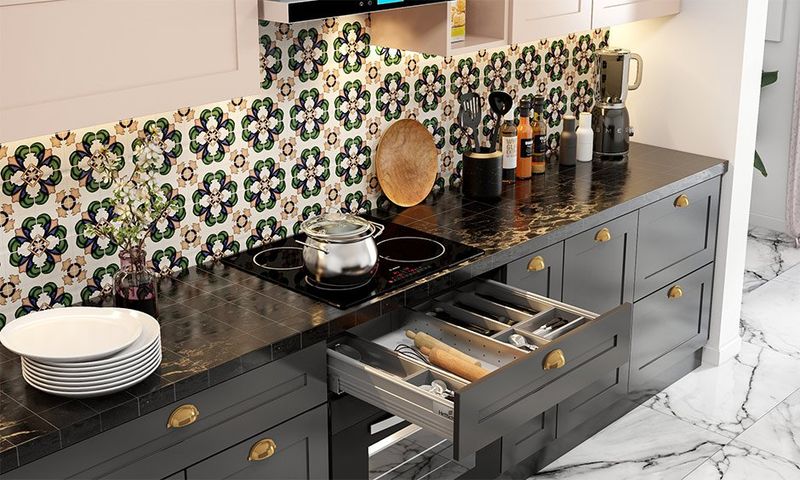
Practical and infinitely customizable, these surfaces create one-of-a-kind workspaces. Homeowners can express their personality through color, pattern, and grout choices.
Tile countertops were standard in mid-century homes before falling out of favor. Today’s versions feature improved grout formulations that resist staining, and creative installations that minimize the uneven surface that was previously considered a drawback.
15. Formica Tables
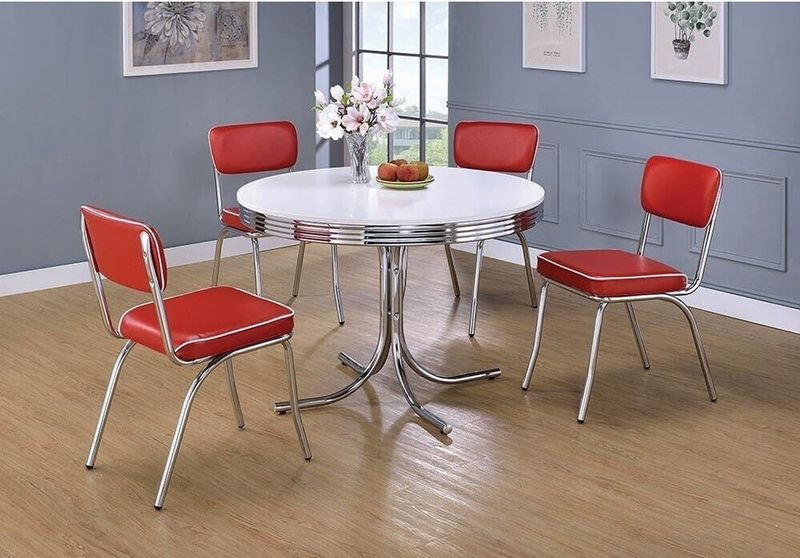
Retro diners inspire today’s eat-in kitchens with chrome-edged tables that combine nostalgia with practicality. Their easy-clean surfaces stand up to family meals and homework sessions alike.
Formica tables were in nearly every home from the 1950s through the 1970s. The current revival appreciates both their durability and the way they instantly add mid-century charm to contemporary spaces without feeling like a time capsule.
16. Linoleum Patterns
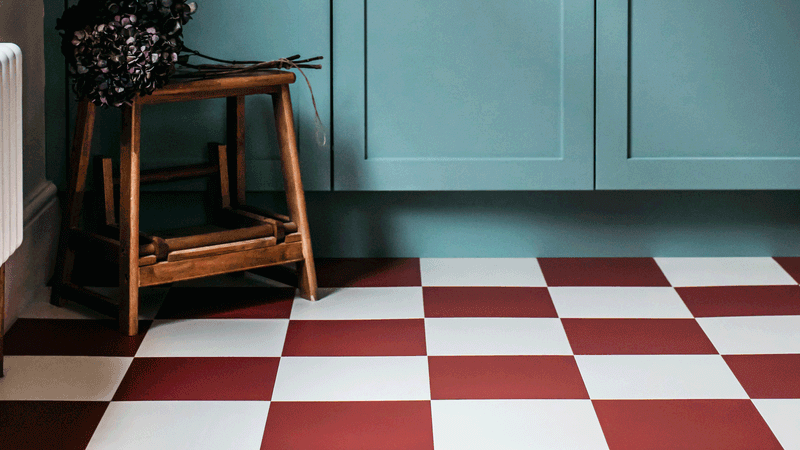
Checkerboard floors and geometric designs create playful foundations for cooking spaces. These distinctive patterns instantly establish personality that plain surfaces lack.
Patterned linoleum was everywhere in the early to mid-20th century. Modern installations often feature larger scale patterns and contemporary color combinations that reference the past while feeling fresh and intentional rather than dated.
17. Vintage-Style Refrigerators

Rounded edges and statement colors recall simpler times while housing modern technology inside. These appliances become conversation pieces rather than background utilities.
Vintage-style refrigerators combine nostalgic exteriors with energy-efficient interiors. Manufacturers now offer the best of both worlds – the charm of mid-century design with contemporary features like ice makers, water dispensers, and improved temperature control.
18. Wood Cabinetry

Natural grain patterns add warmth that painted surfaces can’t match. The organic variation creates visual interest that feels both timeless and current.
Wood cabinets dominated kitchens before white and gray took over. The revival embraces lighter stains and more natural finishes than the orange-toned versions of decades past, creating spaces that feel connected to nature rather than heavy or dated.
19. Vintage Hardware
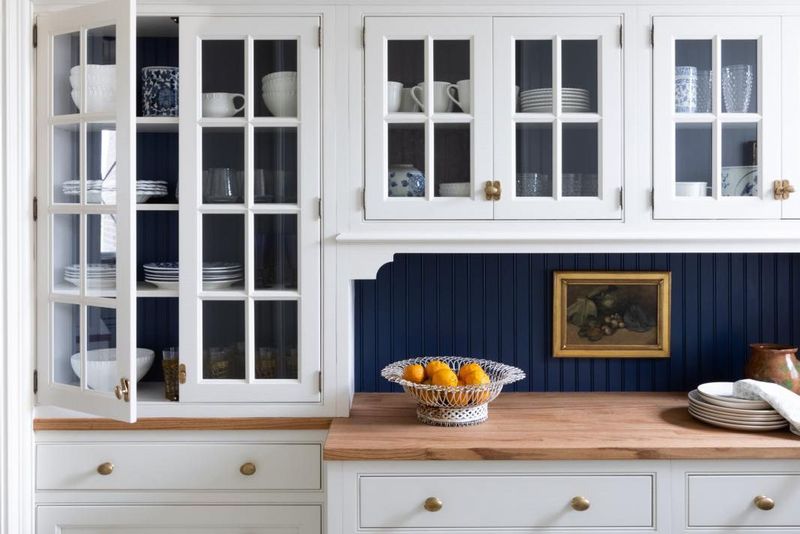
Brass pulls and glass knobs add character to even the most basic cabinets. These small details create big impact through their tactile quality and visual sparkle.
Vintage hardware fell out of favor when minimalism dominated. Today’s designers appreciate how these functional jewelry pieces add personality and history to kitchens, often mixing various antique styles rather than matching everything for a collected-over-time feeling.
20. Formal Dining Nooks
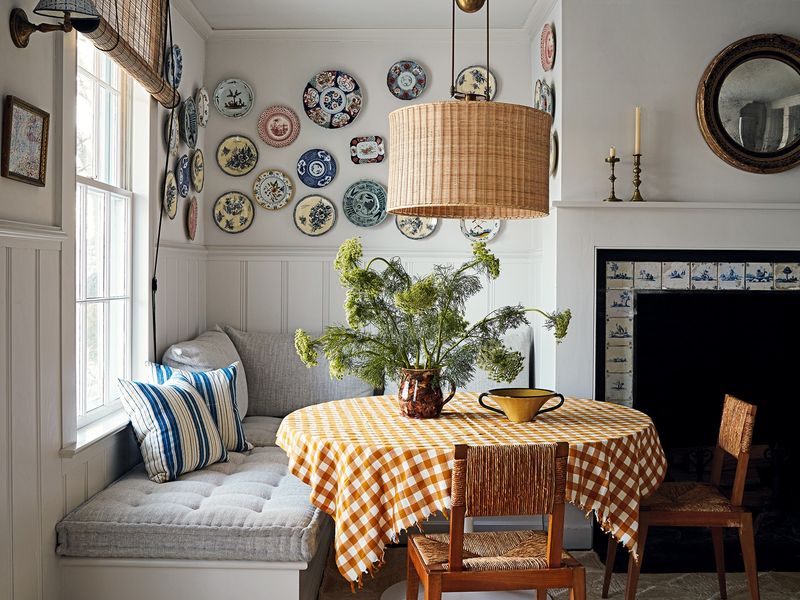
Dedicated eating spaces within the kitchen create gathering spots that open floor plans often lack. These intentional areas encourage lingering conversations over meals rather than eating on the go.
Formal dining nooks were standard before great rooms became popular. Their comeback reflects our desire for defined spaces with specific purposes, creating cozy moments within larger rooms while maintaining the connection between cooking and dining.
21. Patterned Backsplashes
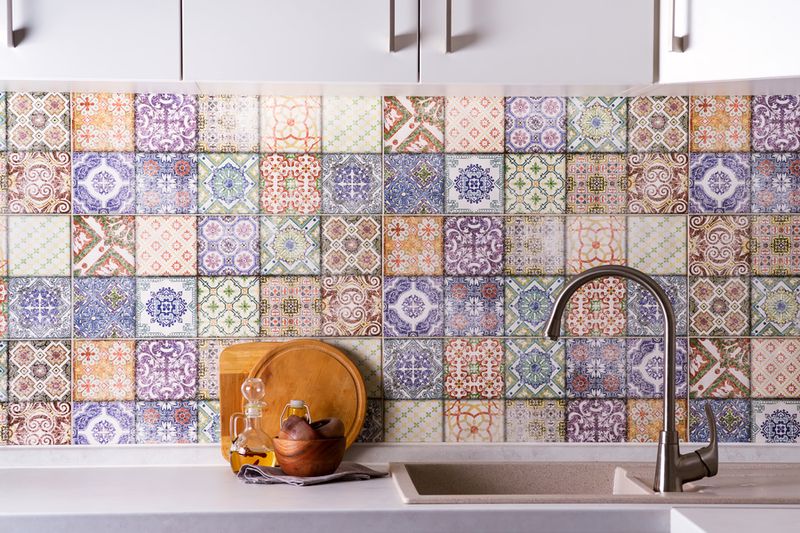
Moroccan tiles and geometric designs create focal points behind sinks and ranges. These eye-catching installations add personality without overwhelming the entire space.
Patterned backsplashes were common before minimalism took hold. Today’s versions often feature handmade qualities and imperfect finishes that add character and craftsmanship to kitchens that might otherwise feel mass-produced.
22. Decorative Range Hoods

Once purely functional, these statement pieces now incorporate artistic elements and unexpected materials. Copper, brass, and even custom woodwork transform necessary ventilation into architectural features.
Decorative range hoods were common in old European kitchens before disappearing behind cabinetry. Their resurgence celebrates the cooking area as the heart of the kitchen, worthy of special attention and design consideration rather than something to be hidden away.
23. Open Shelving
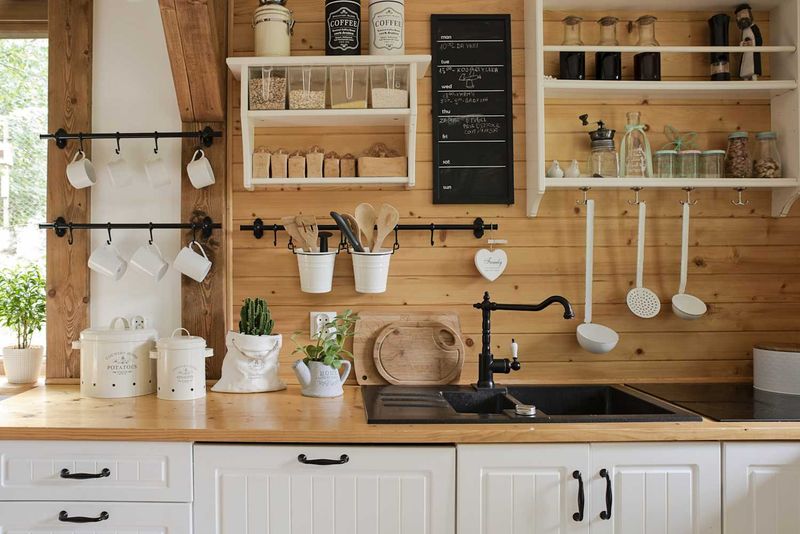
Displaying everyday dishes creates an inviting, lived-in atmosphere. Open shelving transforms utilitarian items into decorative elements that showcase your personal style.
This storage approach was common before upper cabinets became standard. While it requires more thoughtful organization and regular dusting, the accessibility and airy feel make it worth the extra effort for many homeowners seeking a more casual, collected look.
24. Vintage-Style Faucets
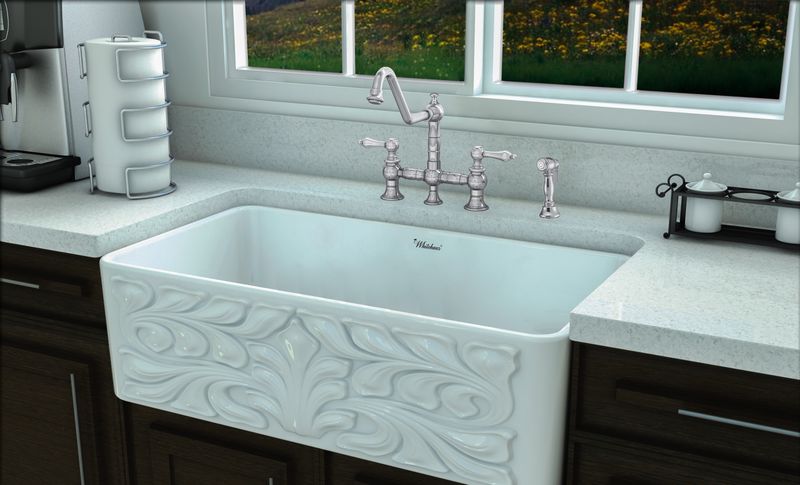
Bridge designs and porcelain handles add classic charm to the most-used fixture in the kitchen. Their substantial presence makes a statement above undermount sinks.
Vintage-style faucets combine traditional appearances with modern water-saving features. Today’s versions offer the best of both worlds – the visual appeal of earlier eras with the convenience of pull-down sprayers and ceramic disc valves that prevent leaking.
25. Colorful Cabinets
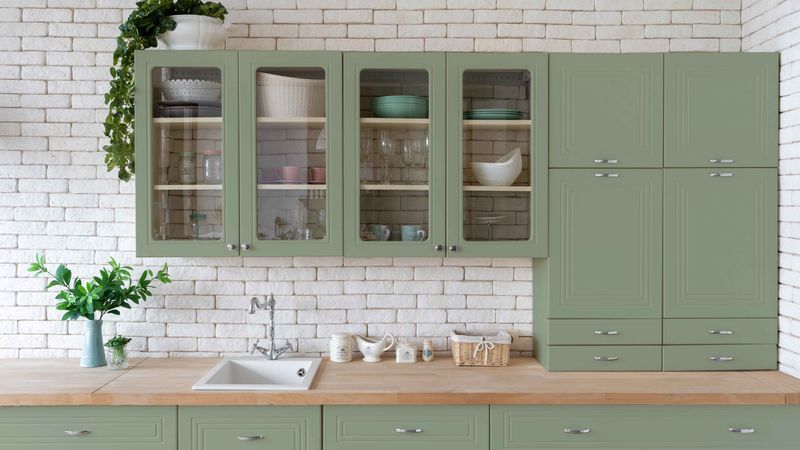
Navy, green, and even pink painted finishes create personality beyond basic white. These statement colors transform standard boxes into custom-looking installations.
Colorful cabinets were common before white kitchens dominated for decades. The current revival embraces richer, more complex hues than the primary colors of the past, creating sophisticated spaces that reflect personal style rather than passing trends.
26. Scalloped Trim

Playful edges on shelving, range hoods, and islands add whimsical touches to utilitarian spaces. These decorative details soften hard edges throughout the room.
Scalloped trim was popular in cottage kitchens before clean lines took over. Today’s interpretation uses this detail more sparingly as an accent rather than covering every surface, creating moments of delight without feeling overly sweet or precious.
27. Wallpapered Ceilings

Often overlooked, the “fifth wall” provides unexpected opportunities for pattern and color. A decorated ceiling creates visual interest without interfering with functional wall space.
Wallpapered ceilings were common in Victorian homes before falling out of favor. Their revival acknowledges that kitchens deserve the same decorative attention as living spaces, treating utility rooms as worthy of beauty rather than merely practical considerations.
28. Beadboard Paneling
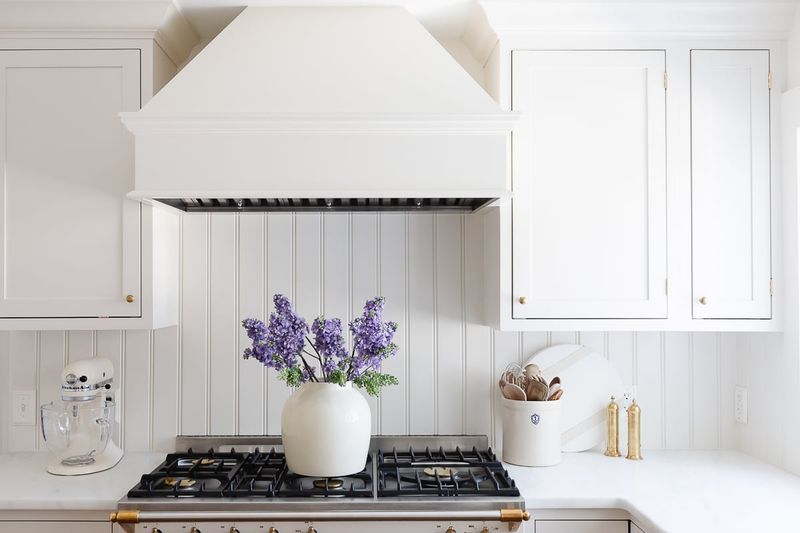
Vertical grooves add texture and character to walls and cabinet faces. This subtle pattern creates visual interest without overwhelming the space.
Beadboard paneling was standard in farmhouse kitchens before smooth surfaces dominated. The current revival appreciates how this detail adds depth and character to basic boxes, elevating simple cabinets with architectural interest that flat panels lack.
29. Vintage Stoves
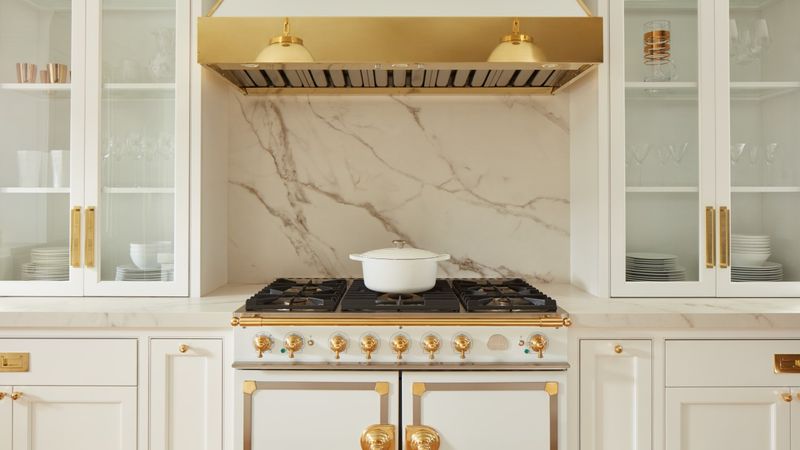
Substantial cooking appliances with multiple ovens and decorative details become the heart of the kitchen. Their presence signals serious cooking happens here.
Vintage stoves like Aga and La Cornue never completely disappeared but were relegated to specialty kitchens. Their renewed popularity celebrates the cooking process as worthy of beautiful tools, treating daily tasks as meaningful rituals rather than chores to minimize.
30. Skirted Sinks

Fabric panels hide plumbing while adding softness to rooms dominated by hard surfaces. These textile touches bring warmth and pattern to utilitarian areas.
Skirted sinks were common before built-in cabinets became standard. Their return offers a charming alternative to solid cabinet fronts, especially in smaller kitchens where breaking up visual weight creates a sense of spaciousness and casual elegance.
31. Plate Racks
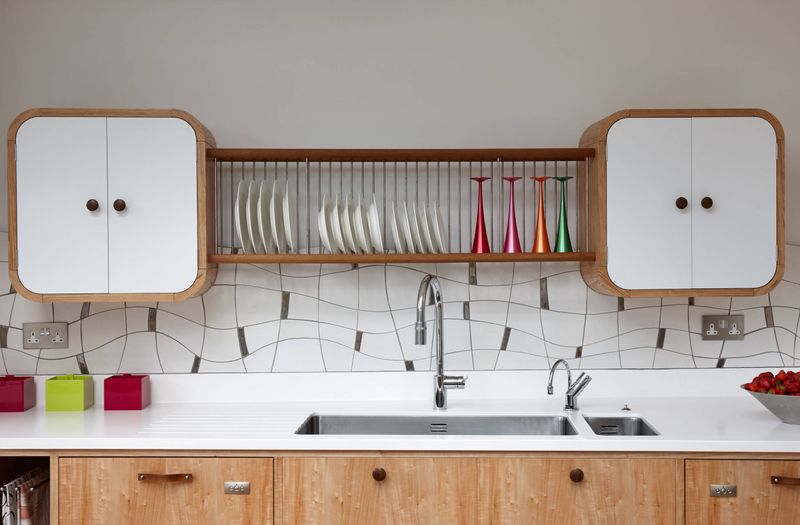
Built-in storage for everyday dishes combines practicality with display opportunities. These specialized cabinets keep frequently used items accessible while showing off beautiful patterns.
Plate racks were standard before closed cabinets took over. Today’s versions often feature adjustable slots to accommodate various dish sizes, combining the charm of traditional kitchens with the functionality modern cooks demand for their diverse collections.
32. Pegboard Storage

Made famous by Julia Child, these versatile walls keep cooking tools visible and accessible. The customizable arrangement allows for personal organization systems that evolve with changing needs.
Pegboard storage was popular in mid-century kitchens before being replaced by cabinets. Its comeback celebrates the beauty of useful objects and the practicality of seeing everything at once, rather than hiding tools away in drawers.
33. Arched Doorways

Softened transitions between rooms create graceful flow throughout the home. These curved openings add architectural interest to basic rectangular spaces.
Arched doorways were standard in older homes before squared-off openings became the norm. Their revival brings back a sense of intentional separation between spaces while maintaining the connection modern living demands, creating defined areas without closed-off rooms.

